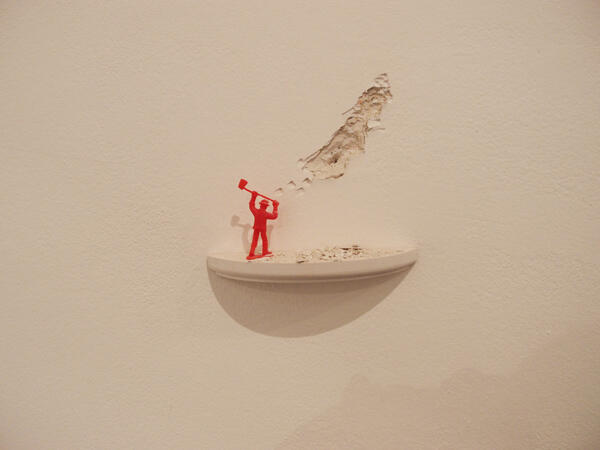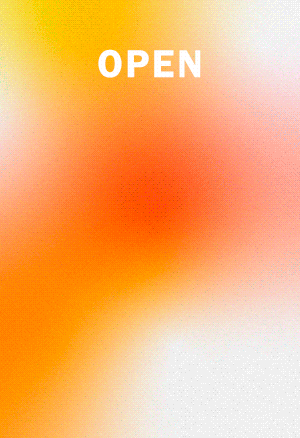Liliana Porter
Mor-Charpentier, París
Art is an excellent platform from which to experiment with narrative, since in art, languages and their reading are constantly modified. Each particular artist alters the conception of what an artwork is; of what is the story that is being told is, and how it is received.

There are no well-defined, strict rules, and hence the possibilities for a poetic escape are multiple. While Liliana Porter has based her work on fairy tales and children’s toys for many years, her subject-matter appears to be inexhaustible. Each sculpture is a particular world born from a narrative, from an imaginary, conceived as the opening of a space for and a meeting-point between the conscious and the unconscious. Associating sculptures and objects, she stages fragile harmonies and invents a lyricism devoid of any grandiloquence. Her first solo show in France, “The Color Red”, gathers together a series of recent works and highlights others created specifically for this exhibition, including photographs, videos, works on canvas, prints, drawings, collages and small installations.
The materials she chooses for her works include all kinds of figurines, toys, inanimate objects and utensils which form part of a collection she has assembled throughout her life. Placed in a variety of situations and unexpected encounters, these characters are rarely shown in groups; they always appear alone. The issue of solitude is central in Porter’s work. In her photographs, objects and videos, the characters always pose alone; they appear static in an empty visual field, and if they engage in a dialogue, they do so with characters that belong to a different species. The artist places them before the eyes of the viewer with tenderness and cruelty, rendered even smaller in the midst of a bright light. Each element is distinguished by its discreet fragility, by a thin line between the everlasting and the transitory, where the exercise and the repetition of certain manual gestures constitute the essence of her work. Through their presence, these objects and characters inaugurate a world which, from its small scale, alludes to man’s solitary existence, reminding us of the fact that it has certain duration in time, and that it occurs in space, in a particular place. The more perfect the void in which the character is situated and the smaller the object in relation to the background against which it is placed, the more affective our gaze on them becomes.
Thanks to the appropriation and the denaturing of the objects employed, the works appear in an environment and in a temporal dimension that are characteristic of the artist; she centralizes in the structure of the work the units of time, space and action, to which she adds movement − that of the viewer, who is forced to pause and observe. Intrigued, he/she must approach the works in order to discover the details, and in this way a reflective connection with each of them is created. In those minute worlds, the small figure of man contrasts with the vastness of space, and this contrast gives rise to a temporal notion associated to the finite and the infinite, and to a spatial one related to the vast and the minute.
Liliana Porter modifies perspectives, thus establishing new relationships that are not the conventional ones, but the ones that create new fictions, which are ultimately a fragile narrative exposed to transformations. She distorts her toys into paintings and Polaroid photographs, in order to create the imaginary portrait of her characters, which floats on a neutral background. The outline encloses the shape and marks the presence of the object. The surface is delimited without being materialized. Like a musical note, the work fills the space without saturating it. It is an oeuvre that becomes independent from any weight, from any materiality, to focus on the void and on the form from which another form emerges that places itself on it.
There is something absurd in the sculptures that make up this exhibit; something disquieting in the minute objects and characters that the artist shows us. Hers is a timeless world that has a strong impact due to the way in which it succeeds in creating a sort of new sculptural archaeology. Porter’s production implies a permanent revision and reformulation of elements and concepts that are a constant in her work. Many of the pieces show this incisive and theatrical, almost narrative intention, regarding different issues that directly concern her compositions: the artwork as hotbed for multiple reflections, as the repository of changing points of view throughout history, and as an irremediably incomplete historical space that is progressively the subject of new readings, in such a way that each work ends up having an extensive temporal meaning. Through transformation and enrichment, Liliana Porter has combined two parallel languages that allow the opening of a hermetic and sterile discourse towards more complex and multidisciplinary fields, literary or political, in which the text formulates new alternatives regarding the pre-established discourse posed by the images themselves.
-
 Axed (Red) - Plastic figurine on wooden base and cracked wall 12,7 x 5,1 x 5,7 cm
Axed (Red) - Plastic figurine on wooden base and cracked wall 12,7 x 5,1 x 5,7 cm
Unique work - 2012 - Photo: Daniel Avena




